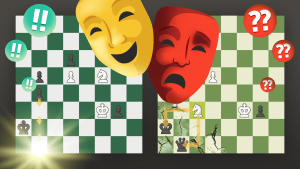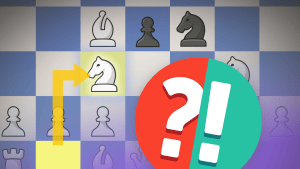
Openings for Tactical Players: How to beat a Grandmaster
Say you are just a club player and going to play a GM in the next round of a Swiss tournament, or maybe just in a simul. What would be your strategy? Yes, you can try to play defensive chess, trade pieces and hope to make a draw. This is a very popular strategy amongst low rated players playing GMs. Let me tell you that this strategy almost never works. Besides, there is nothing more pleasant for a GM than to torture his opponent without any risk to lose. As the result of such a passive strategy you are going to lose for sure but the worst of all, you are not going to enjoy the game. I would suggest you to employ a completely opposite strategy. From the very first moves try to go for a kill. Attack, sacrifice and don't even think about a draw. Yes, chances are that you will go down in flames, but at least you have an opportunity to deliver a mighty blow that would defeat your formidable opponent. Besides, regardless of the result, you are going to enjoy such a battle more than if you passively waited him to display his superior technique. Of course to maximize your chances you want to surprise your opponent and hopefully ambush him in an unfamiliar situation. Say, your opponent plays the Sicilian Defense (by far the most popular GM response against 1.e4). You can play the Najdorf, Sveshnikov or some other main variation, but do you really want to test his knowledge in the line he analyzes on a daily basis (remember, you are playing a top professional who probably devotes most of his studies to openings!)?
As a possible solution of this problem you can employ the Wing Gambit (1.e4 c5 2. b4!?). Even though this opening was first played by Greco in 1620, it is still the least developed line in the Sicilian Defense and therefore here you have the best chance to surprise your opponent. Besides, a variation which was played by Capablanca, Alekhine, Marshall, Spielmann, Bronstein and other famous chessplayers cannot be bad, can it?
All the games we are going to analyze today have one thing in common. White was a lower rated, unknown player, meanwhile Black was a GM and in one case even the ex-World Champion.
As I mentioned above, one of the advantages of the Wing Gambit is that it is not unexplored as well as any other line of the Sicilian. You can show your creativity very early in the game. In fact, the first choice you have to make is what to play after Black accepts your sac (2... cxb4). You have at least three promising continuations and we'll look at all of them one by one.
The most straightforward approach is 3.d4. In the next game ex-World Champion Max Euwe missed a wicked shot and was forced to resign as early as move 19!

